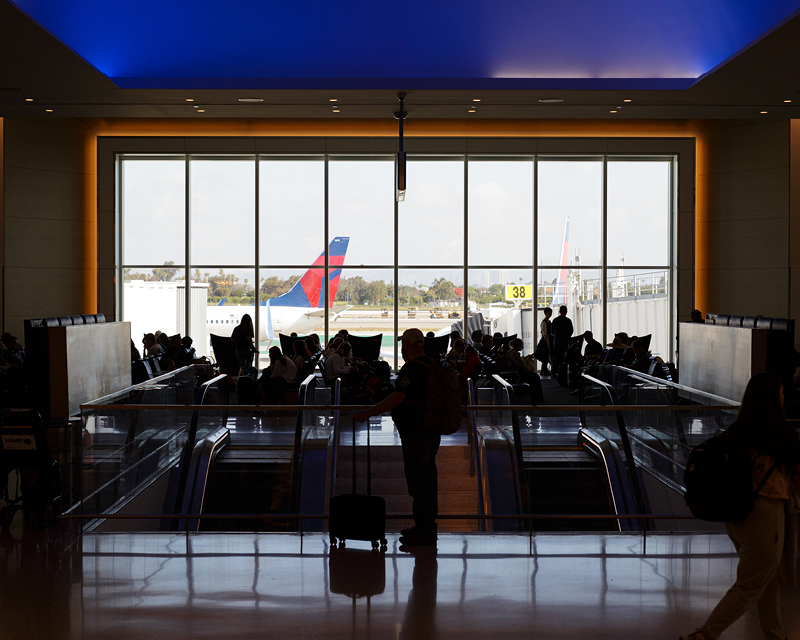CHARLOTTE, NC – The next phase of a major reconstruction initiative at Charlotte Douglas International Airport in North Carolina is about to get underway, thanks to a sophisticated construction sequencing plan that was developed by STV, a leading transportation engineering firm.
STV was contracted by the airport to provide traffic analysis for motorists and pedestrians, traffic control sequencing, and a 3-D rendering video as part of the facility’s $2.5 billion capital investment program. A new entrance roadway, elevated structure and pedestrian tunnels that are adjacent to the main terminal building are a part of the airport’s development plan, known as Destination CLT.
Over the next four years, a number of construction projects will be ongoing at the airport, with patrons passing through the construction site via car and bus, and pedestrians traveling between the terminal and parking deck. STV was brought in to help determine the best construction plan that would keep the airport operational and the user experience as smooth as possible.
“The client was clear that the fastest and/or cheapest construction sequencing plan was not top priority,” said John Johnson, P.E., STV vice president and senior project manager. “Rather, the goal was to emphasize customer mobility and safety while construction activities were ongoing.”
To evaluate and identify the recommended sequence of construction at the airport, STV’s engineers created a simulation model for passenger and commercial vehicle roadways servicing the arrival and departure levels for existing conditions and for alternative construction stages. These analyses accounted for all of the existing and proposed physical geometry of the airport roadway system, including configurations, pedestrian crossings, and upper- and lower-level curbside parking. The model estimated the vehicle assignments and routes within the terminal roadway system based on peak-hour passenger volumes for arrivals and departures, vehicle occupancy, and access restrictions for curb spaces for different vehicle types. It also accounted for curb dwell times according to vehicle types.
“Our traffic simulation work was beneficial to the client and helped inform the design process,” said Steven Scalici, P.E., STV senior associate and traffic practice manager. “The model provided the community simulated ‘moving’ future designs, and more specifically, showed how construction could possibly burden traffic flow.”
STV’s model was further enhanced by a sophisticated 3-D rendering video created by the project team. The video demonstrated STV’s recommended construction sequencing plan via an animated sequence that showcased existing conditions and the proposed entrance road, bridge and pedestrian tunnels.
“The animation helped both the client and us to better visualize our proposed construction sequencing plan,” said Nikki Honeycutt, P.E., STV’s engineering director for highways in North Carolina. “It also identified some nuances in design and other details that might not have been visible in the simulation model, which went a long way in creating a successful planning project for the airport.”





